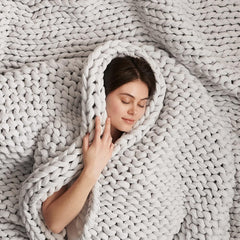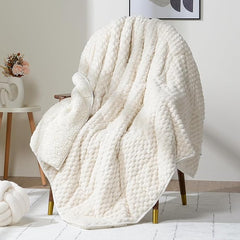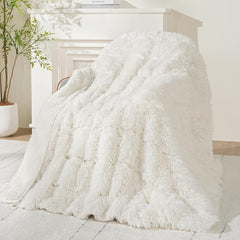
The Science Behind Weighted Blankets and ADHD (Why They Work So Well!)
I Didn’t Realize How Exhausted I Was—Until I Started Sleeping Better
For years, I thought my sleep struggles were just part of having ADHD. I was always restless, tossing and turning, unable to get comfortable. My brain never seemed to shut off, and even when I did fall asleep, I’d wake up throughout the night.
It wasn’t until I started using a weighted blanket that I realized how much of my exhaustion wasn’t just about sleep—it was about how my nervous system never fully relaxed.
If you’ve ever felt like your brain is stuck in overdrive, this might be what you need.
Why ADHD and Sleep Don’t Get Along
Sleep advice for ADHDers tends to focus on bedtime routines, but the real issue isn’t just about habits—it’s biological.
People with ADHD often experience:
- Racing thoughts that keep them up at night
- Restlessness and fidgeting that make it hard to settle
- Delayed melatonin production, which throws off natural sleep cycles
- Sensory overload, making blankets, sheets, and even the air in the room feel “wrong”
The problem isn’t just falling asleep—it’s getting the brain and body to slow down enough to feel safe.
This is where weighted blankets come in.
The Science Behind Weighted Blankets
Weighted blankets use deep pressure stimulation (DPS)—a gentle, evenly distributed weight that signals the nervous system to shift into relaxation mode. It’s the same reason why hugs, swaddling, or compression therapy feel calming.
When your body experiences deep pressure, it can:
- ✅ Lower cortisol (stress hormone) – Helping you feel less anxious and overstimulated
- ✅ Increase melatonin (sleep hormone) – Making it easier to fall asleep naturally
- ✅ Boost serotonin (mood stabilizer) – Helping regulate emotions and focus
For ADHDers, this combination makes a huge difference. It’s not about forcing sleep—it’s about giving your nervous system the conditions it needs to finally relax.
I Thought It Was Just a Blanket—Until I Tried It
At first, I didn’t think a weighted blanket could really change anything. I’d tried everything else—sleep apps, melatonin, no caffeine after noon—but nothing really worked.
But from the first night, I could tell something was different.
- ✅ I stopped tossing and turning. The weight kept me grounded, so I didn’t feel the need to move constantly.
- ✅ My brain felt quieter. It wasn’t a magic switch, but the usual racing thoughts felt less urgent.
- ✅ I actually stayed asleep. For the first time in forever, I wasn’t waking up every hour.
It was like my body had been waiting for something to help it settle down—and this was it.
More Than Just a Sleep Hack
Weighted blankets aren’t just for sleeping. They can also help with:
- ✅ Anxiety and stress relief – Using one while working, reading, or watching TV can help calm the nervous system.
- ✅ Sensory regulation – If textures, sounds, or lights overwhelm you, the pressure of a weighted blanket can help create a sense of stability.
- ✅ Focus and productivity – Some people even use lap-sized weighted blankets during the day to help with concentration.
It’s not just about rest—it’s about feeling grounded in a way that’s hard to describe until you experience it.
Is a Weighted Blanket Right for You?
If you struggle with:
- ❌ Restlessness at night
- ❌ Overstimulation that makes it hard to wind down
- ❌ Waking up feeling exhausted, even after a full night’s sleep
- ❌ Anxiety that makes it hard to focus
Then a weighted blanket might be worth trying.
The key is finding one that works for you:
- ✔ Choose the right weight: About 10% of your body weight is ideal.
- ✔ Look for breathable fabric: If you run hot, consider cooling materials like bamboo or cotton.
- ✔ Easy to clean: Some come with removable, washable covers for convenience.
Final Thoughts
I used to think my sleep issues were just part of life with ADHD. But now I know that small changes can make a big difference—and for me, a weighted blanket was one of those changes.
If you’re ready to get one, check out the Bearaby Cotton Napper—a breathable, hand-knit option that doesn’t trap heat.

Give it a try and see if it makes a difference for you. You might be surprised at how much calmer and more rested you feel.



